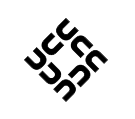|
Size: 765
Comment:
|
← Revision 7 as of 2010-04-17 13:12:43 ⇥
Size: 825
Comment:
|
| Deletions are marked like this. | Additions are marked like this. |
| Line 1: | Line 1: |
| ## page was renamed from CommunicationSystemsENGT3302 | |
| Line 7: | Line 8: |
| <!> before 2006, CommSys was split separately into ''Communications'' and ''Information Theory and Coding'' | <!> before 2002, CommSys was split separately into ''Communications'' and ''Information Theory and Coding'' |
| Line 9: | Line 10: |
| Taken in 2006 by DavidHuang (AC) and RobertTonegri (DC). In previous years communications has been known to be taken by GuvenMercancosk. | Taken in 2006 by DavidHuang (AC) and RobertoTogneri (DC). In previous years communications has been known to be taken by GuvenMercancosk. |
| Line 11: | Line 12: |
| [http://student.ee.uwa.edu.au/~engt3302/ Unit website] | [[http://student.ee.uwa.edu.au/~engt3302/|Unit website]] |
| Line 13: | Line 14: |
| [http://handbooks.uwa.edu.au/units/engt/engt3302 Handbook entry] | [[http://handbooks.uwa.edu.au/units/engt/engt3302|Handbook entry]] |
Communications Systems is split into two parts: Analog Communications and Digital Communications.
Analog Communications covers AM, DSB-SC, SSB, VSB, FM, PM (?) and noise.
Digital Communications covers some information theory (entropy, Huffman encoding, Hamming distance, etc) as well as baseband (PAM) and passband digital communications (FSK, PSK, etc.).
 before 2002, CommSys was split separately into Communications and Information Theory and Coding
before 2002, CommSys was split separately into Communications and Information Theory and Coding
Taken in 2006 by DavidHuang (AC) and RobertoTogneri (DC). In previous years communications has been known to be taken by GuvenMercancosk.



